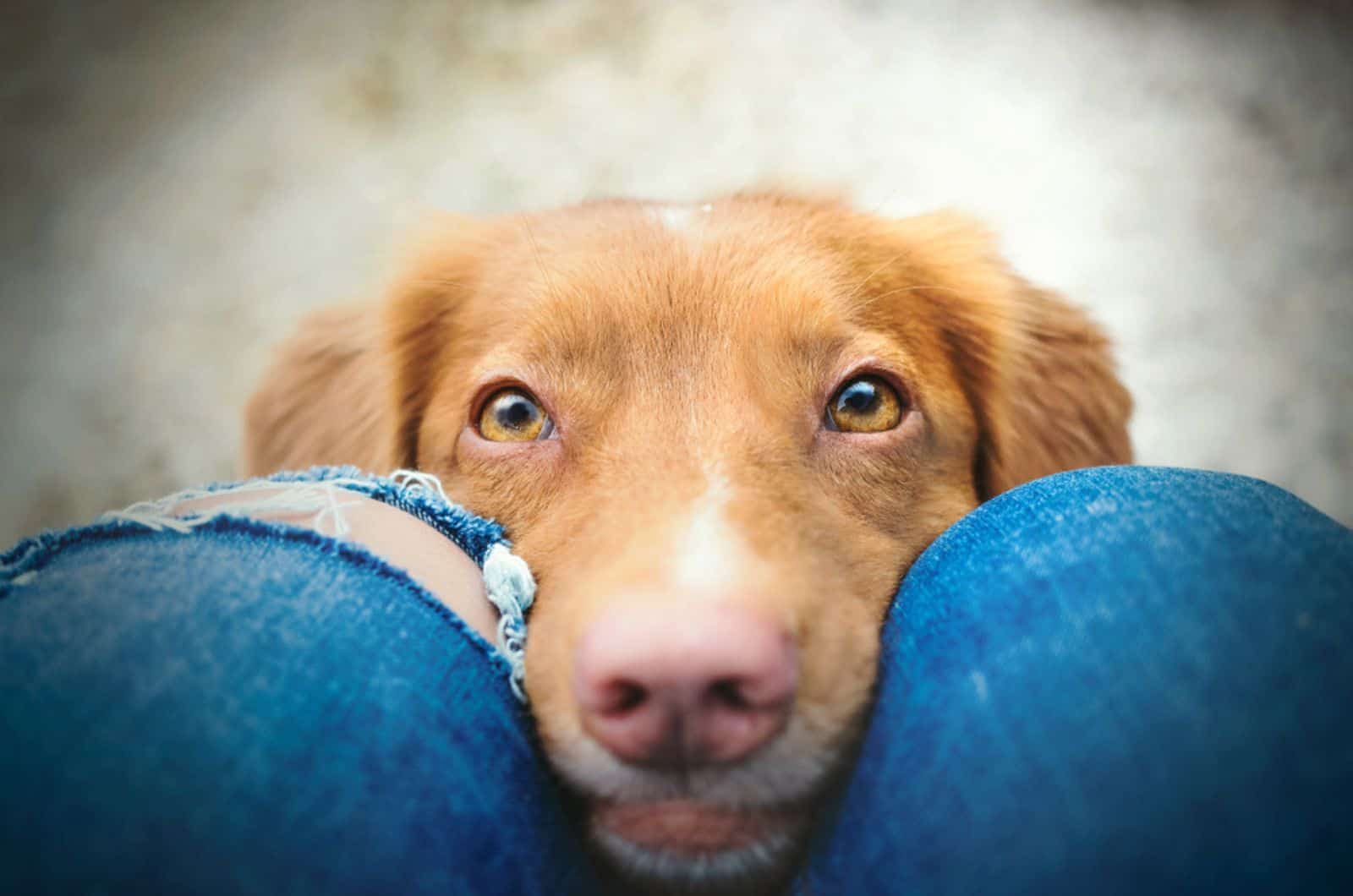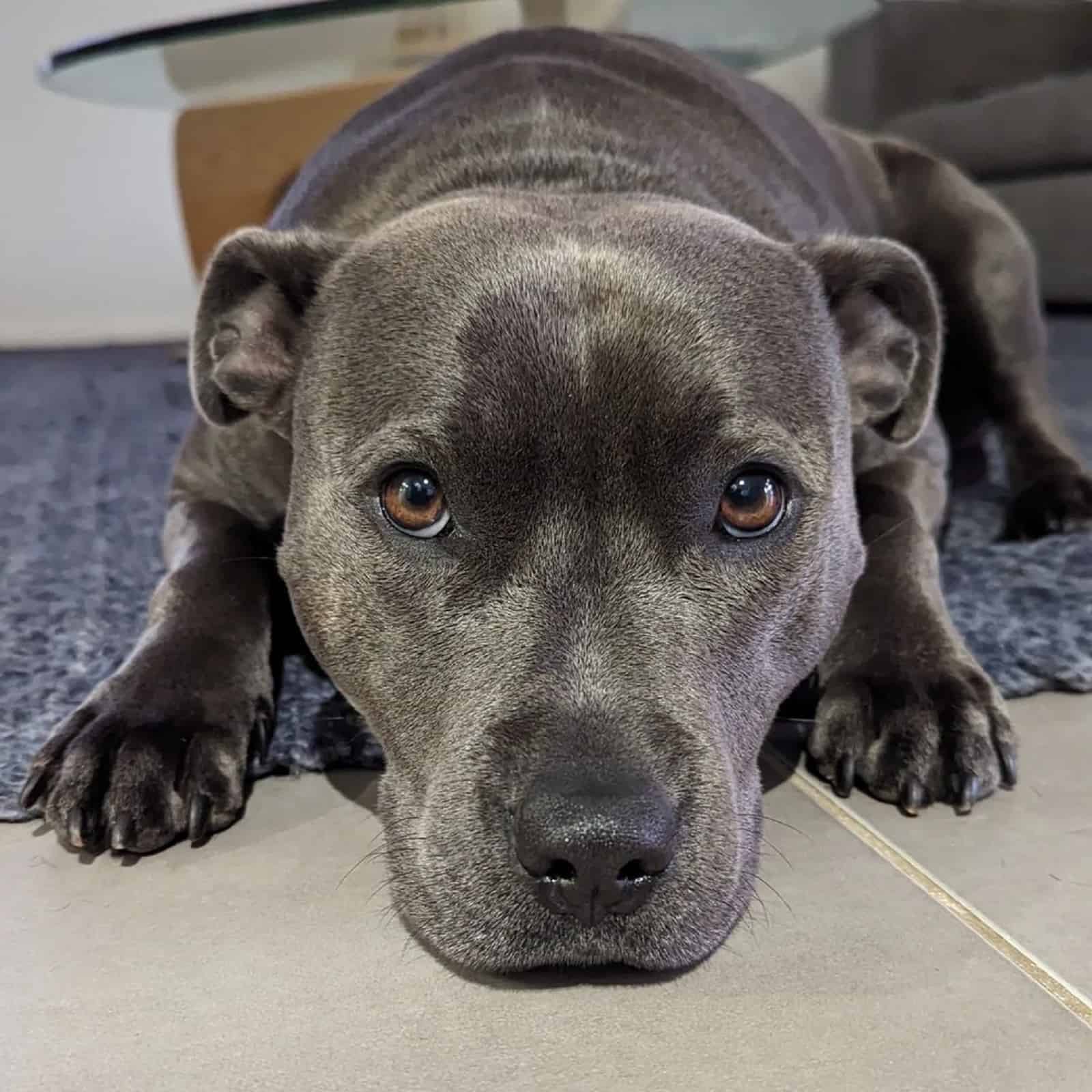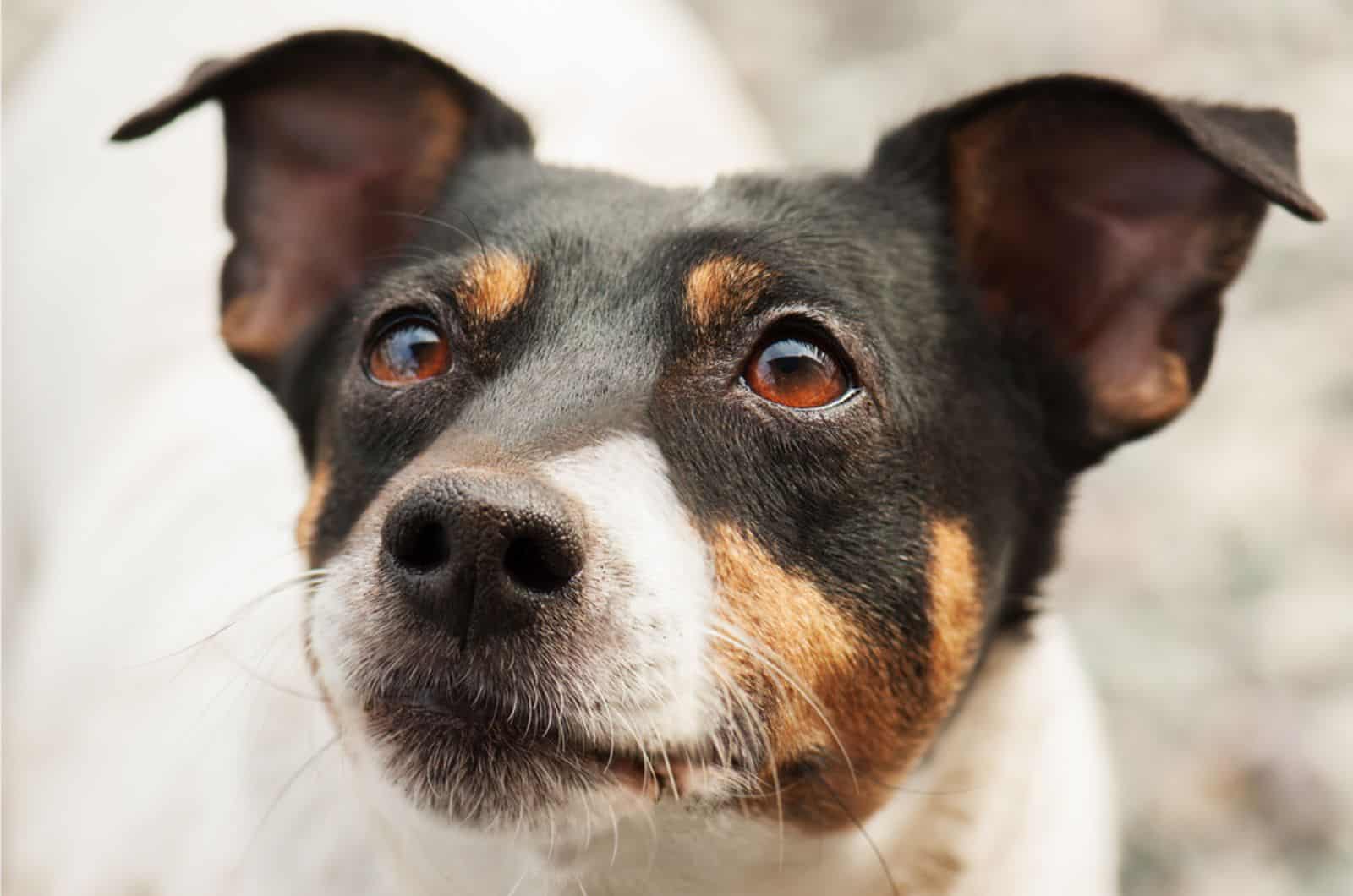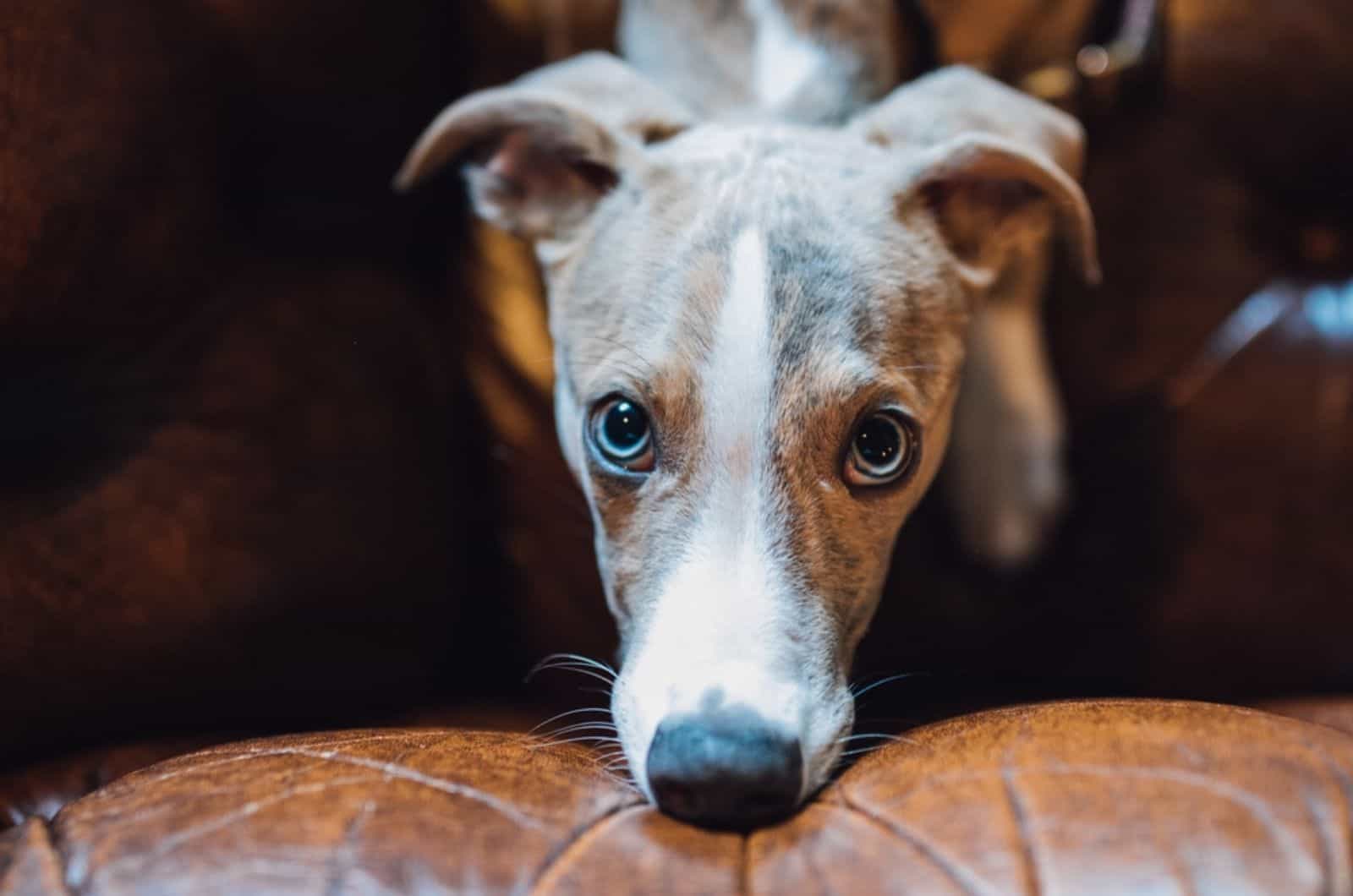Us humans are great at spotting patterns in the world. Puppy dog eyes are not a myth or something you imagined. They are actually an evolutionary trait that helped dogs communicate more effectively with us.
It took a long time to perfect, but dogs are now able to get what they want in a blink of an eye. Time to get into the nitty-gritty of puppy dog eyes.
It Started A Long Time As Part Of The Domestication Process

Canines have shown time and again how well they can adapt to form better bonds with their owners. When food got scarce, they realized humans were willing to leave scraps for them to eat. As our tastes grew more complex, so did the dogs’.
Puppy dog eyes were simply a tool in the making that would help dogs appeal to humans on a higher level. Being cute still holds a lot of weight in today’s society, but back in the day, it meant life or death for a dog.
Am I being dramatic? No, not at all. Merriam-Webster defines “cute” as “attractive or pretty especially in a childish, youthful, or delicate way”. To be in the humans’ good books, they had to be cute. It was like a dog cuteness pageant 30,000 years ago.
Only those dogs that appeared attractive and endearing in a childish way remained close to human tribes and settlement, while the more menacing-looking canines had to seek food and shelter elsewhere.
As the millennia passed, and dogs learned the ABCs of communication with people, some traits seemed to have stuck with them. Eyebrow muscles, in particular, were a game-changer for canines.
The Larger The Eyes, The Bigger The Prize
Observing the interactions between humans, dogs realized that human babies were taken real good care of. So, what could be done to receive at least similar treatment?
Establishing eye contact more often and showing more of the eye white were the two things humans reacted positively to [1]. However, what good would it be to have the tools without knowing how to properly use them in communication?
Whenever there was a task dogs did not understand or able to accomplish, the eye contact signalled to humans that they sought more direction and help solving the problem [2].
These two aspects of adaptation to life with humankind led to more and higher quality food, shelter, social involvement, and overall happiness. Here is a taste of puppy dog eyes.

Scientific Proof Is There

In the same study referred to in the previous section regarding eye contact and eye white, Kaminski and her colleagues determined two things:
- Wolves do not have the levator anguli oculi medialis eyebrow-raising muscle, but it is a completely normal part of dog anatomy. The retractor anguli oculi lateralis muscle, on the other hand, is present in both. Still, the dog version allows for greater movement.
- Cameras recorded wild wolves and dogs while interacting with humans, and the data shows that dogs use this eyebrow muscle much more frequently than wolves.
The hypothesis, according to Kaminski, is that the increased eyebrow muscle activity triggered a nurturing response in humans, which helped the dogs with the cutest puppy dog eyes become permanent members of the human family.
Four wild gray wolves, a GSD, Bloodhound, mongrel, Labrador Retriever, a Chihuahua, and a Siberian Husky were part of this study. The dissection of their facial muscles showed that all breeds of dogs, other than the Husky, had a well-developed eyebrow-raising muscle.
Since Siberian Huskies are the closest relatives to wild wolves, it was not surprising that the same muscle was significantly smaller in the breed.
To sum it up, the eyebrow-raising muscle that dogs developed over time helped them show more of the eye white, which made their eyes look more similar to human eyes. This, in turn, was more endearing and appealing to humans than feral-looking canine eyes.
Hormones Are The Invisible Heroes Of Puppy Dog Eyes
No doubt, the anatomical changes are visible to the eye, but there are crucial biochemical processes that make this evolutionary work the way it does.
Oxytocin is the hormone released to help the uterine muscles contract, ease the passage of milk to the nipple, but the effect relevant for the dog-human relationship is in its ability to intensify bonding.
Production of oxytocin is also released during positive interaction between dogs and humans, a study showed [3]. Having a great time playing or training your dog or cuddling up on the sofa with your canine companion will release the “love hormone”.
The important part is that it goes both ways. Dogs and humans produce oxytocin during positive interactions, which was the primary reason this connection worked out as well as it did.
Here is a video that proves all of these scientific points in ten seconds. You are welcome for the oxytocin release.
References:
[1] Kaminski, J., Waller, B. M., Diogo, R., Hartstone-Rose, A., & Burrows, A. M. (2019). Evolution of facial muscle anatomy in dogs. Proceedings of the National Academy of Sciences, 116(29), 14677–14681. https://doi.org/10.1073/pnas.1820653116
[2] Bräuer, J., Kaminski, J., Riedel, J., Call, J., & Tomasello, M. (2006). Making inferences about the location of Hidden Food: Social Dog, causal ape. Journal of Comparative Psychology, 120(1), 38–47. https://doi.org/10.1037/0735-7036.120.1.38
[3] Marshall-Pescini, S., Schaebs, F. S., Gaugg, A., Meinert, A., Deschner, T., & Range, F. (2019). The role of oxytocin in the dog–owner relationship. Animals, 9(10), 792. https://doi.org/10.3390/ani9100792
